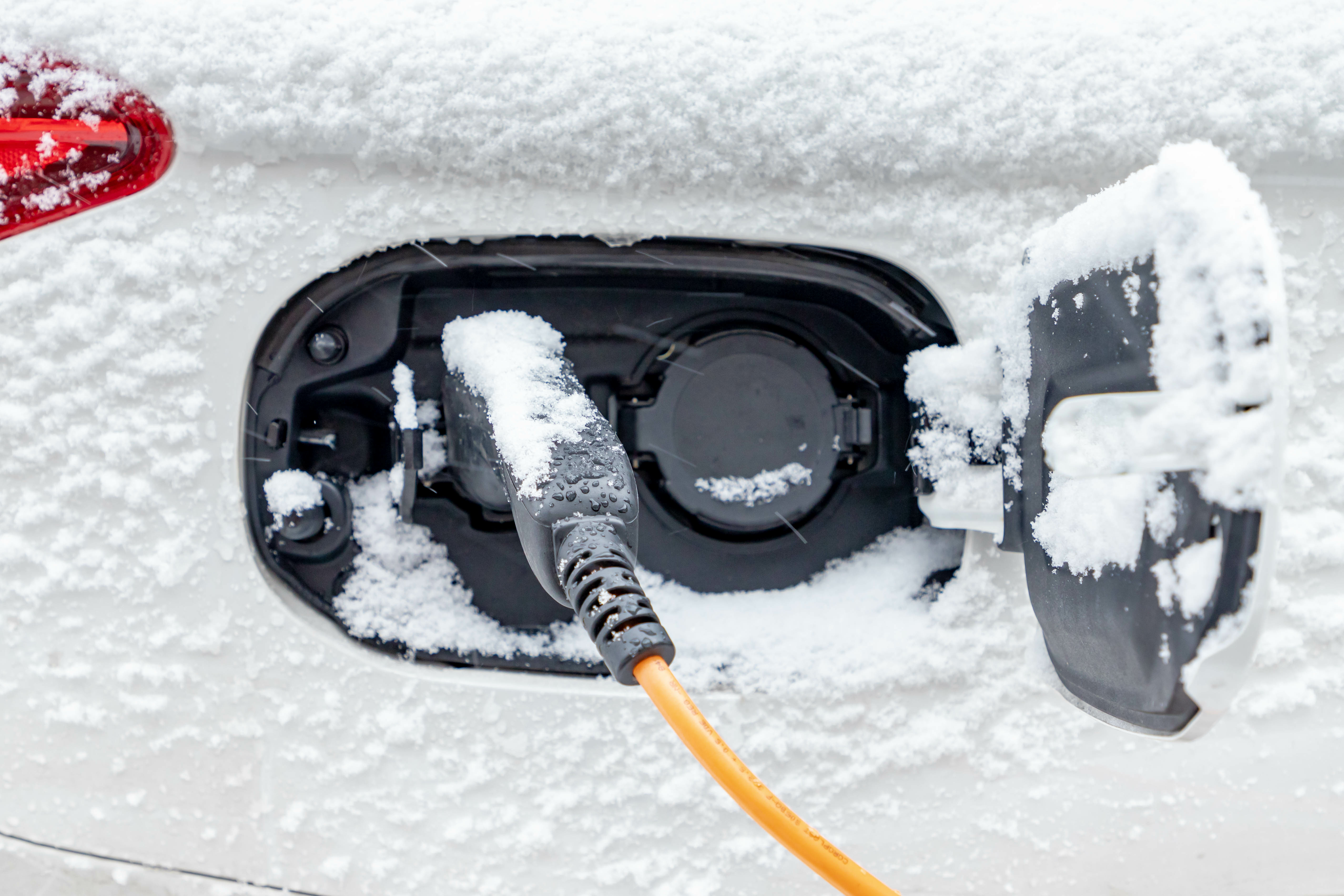Electric vs. Gas Vehicles in Stormy Conditions

In early January 2022, there was a miles-long car pileup on I-95 during one of the first snowstorms of the winter season, with thousands of cars stuck for over 24 hours. One of the biggest problems these drivers faced was hypothermia while waiting for traffic to start moving again. In order to stay warm, drivers had to briefly turn their cars on to heat up the vehicles, then turn them off to conserve gas and charge.
With the rise of electrical vehicles on the road, one fundamental question immediately comes to mind: In extreme situations like this, can modern electric vehicles keep drivers warm while idling, or would they run out of charge?
How long can a gas engine idle?
Let's assume one of the I-95 drivers left their home that day with half a tank, in this case, 9 gallons of gas left. The engine consumes gas while idling and the amount varies greatly by engine type, but we will generalize and say the value is half a gallon of gasoline per hour. Based on these numbers, 9 gallons/0.5gal/hour = 18 hours of idle time. In this case, a driver with a gas engine would have run out of gas before the line of cars started moving again, leaving them cold and blocking the path for others.
How long can an electric vehicle idle?
For an electric vehicle, our energy reservoir here is the battery. Here we do not use gallons, but instead how many kilowatts of energy we can use per hour. As an example, your average hairdryer uses 1,500 watts per hour which is 1.5KWh. Electric vehicles range in usage capacities but we'll average 80KWh. It is recommended to not drive electric vehicles below 20% of SOC (state of charge). This will enable a healthy battery life, which is very important since these are the most expensive part of the vehicle. 20% of 80KW/h is 16KW/h so we have 64KW/h to work with.
Assuming the vehicle gets stuck in the snowstorm with only half of the charge left, that leaves only 30KWh left while sitting on I-95. 2019 electric vehicles use roughly 2KWh for their internal climate control, while the newer models use under 1KWh. Assuming an older model, 30KWh/2KWh= 15 hours before the charge runs out. If the car uses around 1KWh then the charge will run out in 30 hours.
Bender technology for electric vehicles
To summarize, drivers of electric vehicles seem to have a better chance of survival during a blizzard, compared to drivers of gas vehicles. While Bender does not supply devices for gas engines, we do supply electronic components to the electrical vehicle OEMs. When charging and driving, it is important that the entire circuitry stays within safe parameters and does not short-out or create an electrical hazard. Bender devices make sure that these stay safe and provide you with the power needed.
For more information about this application or to learn more about Bender technology related to your specific application, contact our team of experts.
This article is for informational purposes only. Bender provides the information "as is" without warranty and is not responsible for its accuracy or reliability. No warranties are given regarding its suitability for any specific circumstances.




